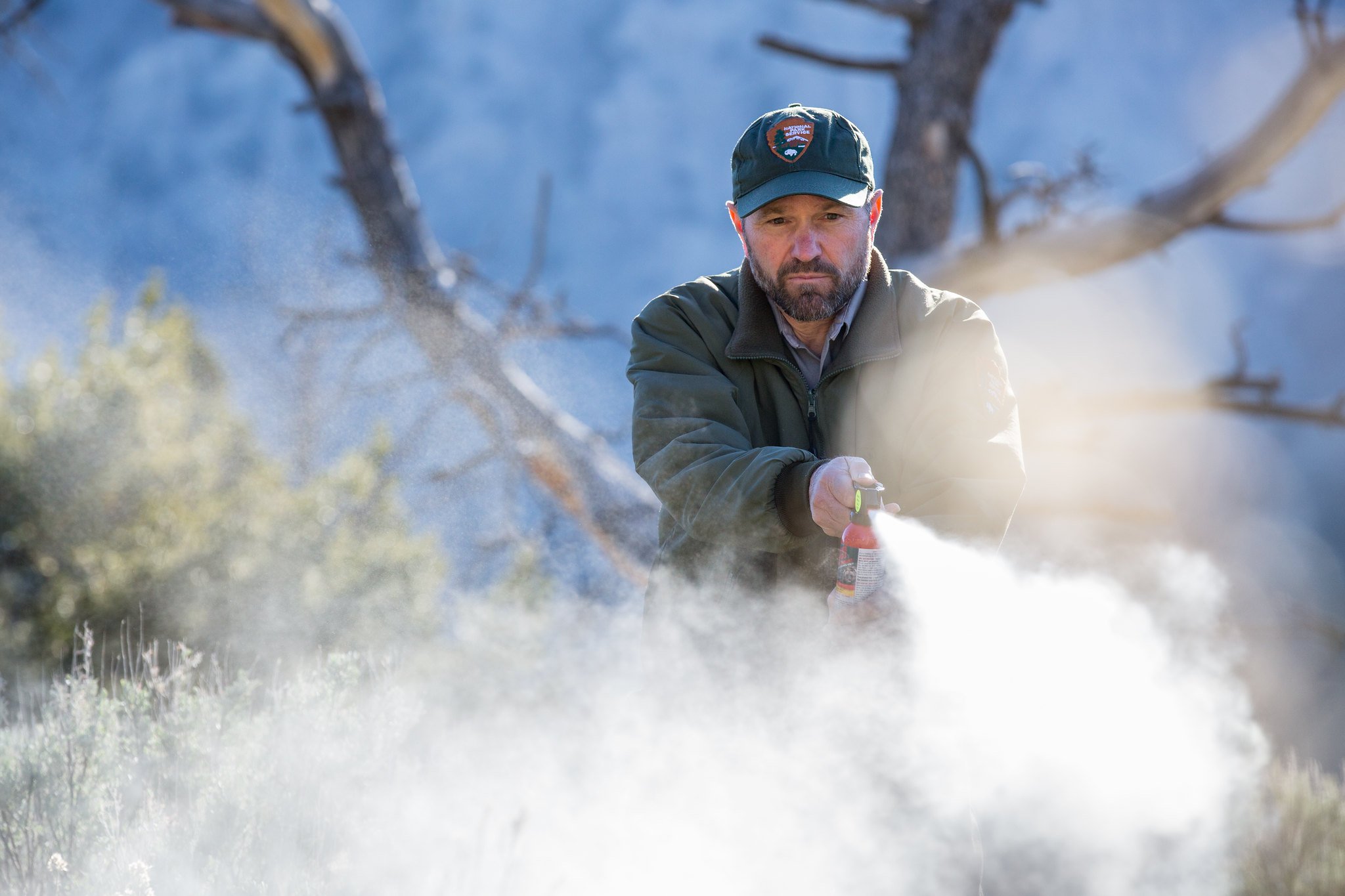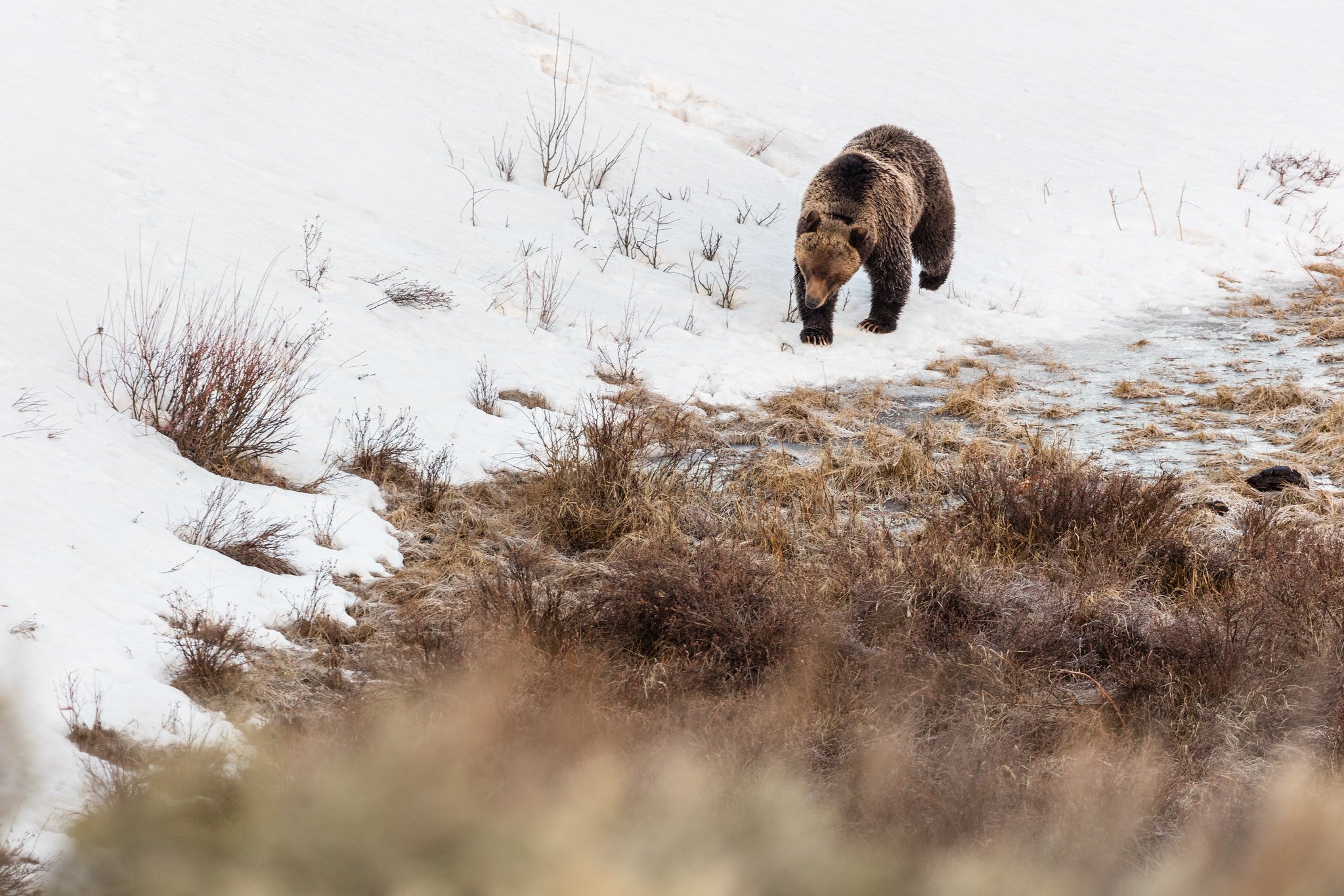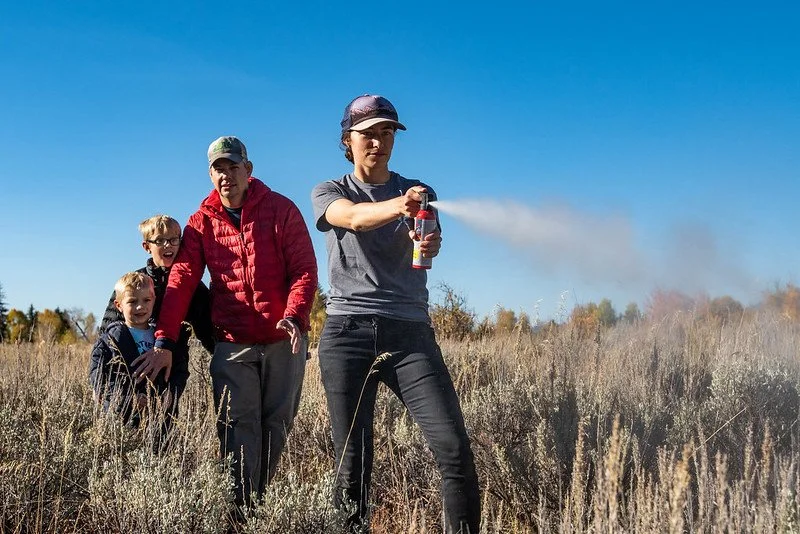
How to Use Bear Spray
One of the many wonders of the Greater Yellowstone Ecosystem is the iconic wildlife, especially bears—both black and grizzlies. When traveling in bear country, you should always carry bear spray in case of an encounter.
Bear spray is one of the most effective tools in stopping aggressive bear behavior, but no bear deterrent is 100 percent effective.
Its use can reduce human injuries caused by bears and the number of bears killed by people in self-defense.
Bear spray uses a mist of Capsicum derivatives to temporarily reduce a bear's ability to breathe, see, and smell. This allows you to remove yourself from the bear encounter.
When recreating in bear country, it is essential to have your bear spray easily accessible. Bear encounters can happen quickly and unexpectedly – keeping bear spray on your hip or chest allows for quick reaction time. Do not keep bear spray in a backpack where you cannot rapidly access it, and do not leave it in a hot car where it might explode.

While you should always have bear spray when in bear country, there are many actions you can take to prevent bear encounters in the first place.
How to prevent unwanted bear encounters in Greater Yellowstone
Travel in groups of three or more.
Look for bear signs – tracks, scat, day beds, carcasses (smell or ravens), scratching, logs torn up, and holes dug for food.
Avoid hiking at dawn, dusk, and night. Bears are most active during these times of day foraging or hunting.
Make noise. Yelling ‘Hey bear’, talking loudly, clapping, and making yourself known to any bears in the area is key. Make sure to be especially noisy as you approach corners or crests when bears cannot see you coming. Also make extra noise when near streams, rivers, and on windy days. Just as you would rather not encounter a bear, a bear would rather not encounter a human. Avoid using bear bells, as bears won’t hear the bells until you are too close.
Be alert. Be aware of your surroundings and avoid using headphones.
Keep your distance. Never approach a bear or cubs. Never surprise a bear—if you see a bear before it sees you, slowly back away from the area and keep an eye on the bear.
If you encounter a bear, but it remains at a safe distance and is not approaching aggressively, you won’t need to deploy bear spray.
How to use bear spray when a bear is charging or approaching quickly
from Idaho Fish and Game
Bear Spray Explanation at 8:08
Remove the safety clip.
Aim in front of the bear, aim slightly down (the spray drifts up), and adjust for crosswind.
Deploy when the bear is 50-60 feet out. You can deploy bear spray if the bear is closer and this could shorten the length of attack.
Create a cloud of spray that the bear has to pass through.
Keep spraying until bear changes direction—if it keeps charging, spray into its face.
Leave the area promptly.
More bear spray tips from our friends at Yellowstone National Park
Practice! Practice popping the safety clip and if you have access to an inert can of bear spray, practice removing it from your holster, removing the safety clip, and firing. Practice firing into headwinds, winds at your back, and cross winds.
Bear spray can explode if it reaches 120 degrees Fahrenheit. Try not to store it in your car or near heat sources.
Do not use bear spray like insect repellent.
It can be beneficial to carry more than one can of bear spray per group – if a bear is very aggressive, it can charge multiple times and it is good to be prepared.
Make sure your bear spray is not expired.
You cannot fly with bear spray, so find a retailer locally to purchase or rent bear spray.




